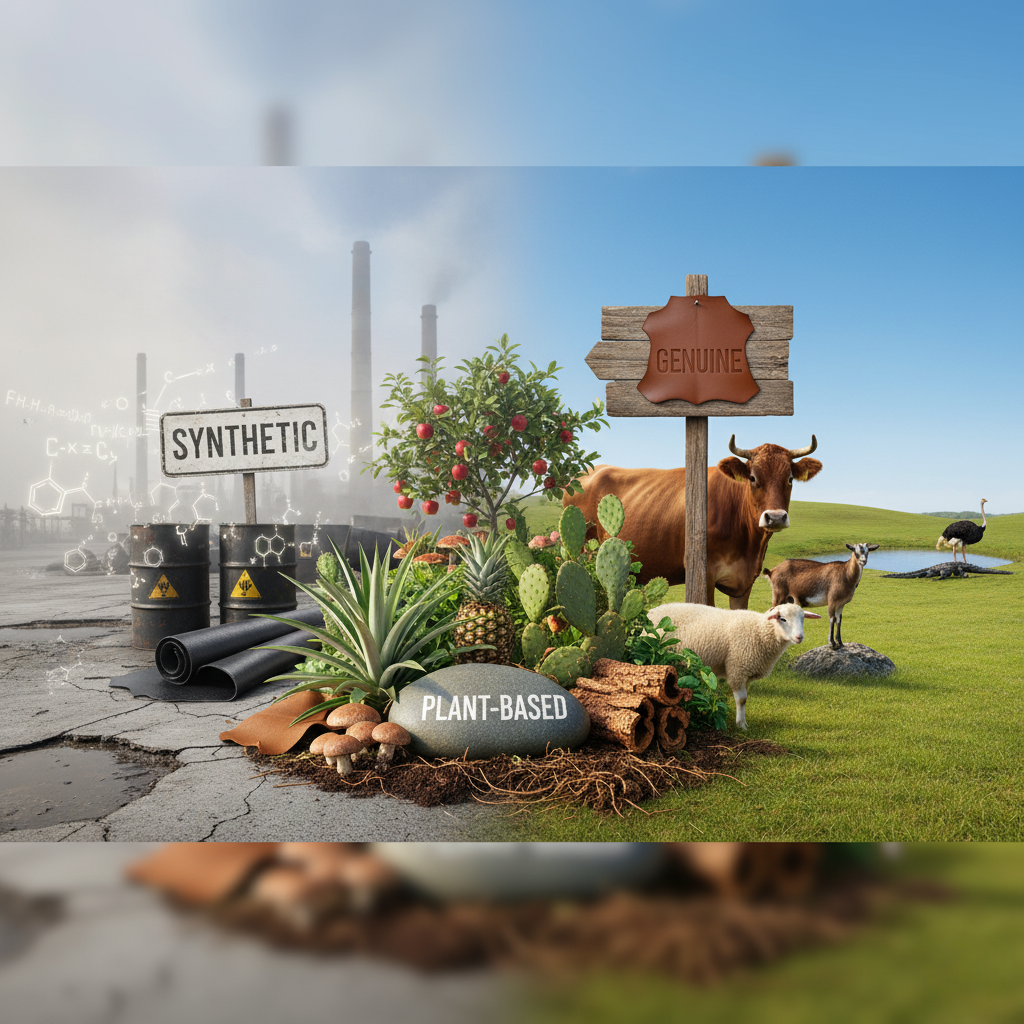The Full Sustainability and Durability Breakdown
The debate around leather in fashion is growing louder. As consumers search for cruelty-free and sustainable alternatives, the market for vegan leather has expanded rapidly, but the reality is complex. Understanding the environmental footprint, durability, and practical performance of vegan versus real leather is key to making informed decisions.
Carbon Footprint: A Surprising Comparison
Many assume plant-based leather is always better for the planet. Surprisingly, mycelium leather, often marketed as highly sustainable, produces 57.15 kg CO₂e per square meter, more than double traditional leather’s 22.48 kg. Synthetic leather, like PU, has the lowest carbon footprint at 15.8 kg CO₂e, while cactus leather and pineapple leather outperform animal leather environmentally, with cactus leather producing only 1.39 kg CO₂e per square meter. Pineapple leather can even be carbon-negative by using agricultural waste
Water Use and pChemical Pollution
Traditional leather is resource-intensive. It consumes 8.6 m³ of water per ton and discharges 30–45% of chromium as hazardous waste. Wastewater from tanning is poorly biodegradable and often highly salted. By contrast, plant-based alternatives use minimal water, especially cactus leather, which relies only on rainwater. Mycelium leather also reduces water usage compared to traditional tanning, though it requires energy-intensive cultivation.
Biodegradability and End-of-Life
Most commercial leather is not truly biodegradable. Chrome-tanned leather can persist for 50+ years. Similarly, many vegan leathers are not fully natural. PU and PVC synthetics take 200+ years to degrade and release microplastics, while coated plant-based leathers are only partially biodegradable. Untreated materials, such as pure cactus or mycelium leather, do biodegrade, but they often lack durability for everyday use.
Durability: The Longevity Trade-Off
Durability is where traditional leather still dominates. With proper care, leather can last decades, develop natural patina, and be repaired multiple times. Vegan alternatives typically last 2–5 years for synthetics, 3–7 years for high-quality plant-based, and mycelium leather shows promise but lacks long-term data. Many plant-based materials require synthetic coatings to prevent cracking, reducing biodegradability and compromising sustainability claims.
Commercial Reality and Innovation Gaps
Lab-grown leather remains mostly experimental, with companies like VitroLabs shutting down despite substantial funding. Commercially, synthetic leather dominates, premium plant-based alternatives serve niche markets, and traditional leather remains the default for durability. The key barrier is the durability-sustainability paradox: making plant-based leather strong enough for real-world use often requires synthetic backings.
Making Informed Choices
Consumers must navigate trade-offs. Cactus leather and pineapple leather are top for environmental impact, synthetic PU leather for low carbon footprint, and traditional leather for longevity and cost-per-wear value. Plant-based leather is still mostly positioned in the premium to luxury price segments, limiting accessibility for budget-conscious shoppers.
Fashion Brands Leading the Way
Some designers are embracing these alternatives. Stella McCartney uses Mylo mycelium leather in her handbags, priced from $800–$3,000. Adidas incorporates Desserto cactus leather into premium sneaker lines ($150–$300). Fossil uses cactus leather for watches and accessories ($100–$500). Vegea produces grape leather in Italy for mid-range fashion items. Piñatex from pineapple leaves appears in bags and footwear across emerging sustainable brands.
__________________________________________
Vegan leather is evolving rapidly, but no option is perfect. Understanding carbon footprint, water use, biodegradability, and durability is essential to choosing responsibly, while supporting innovation in cruelty-free materials.





